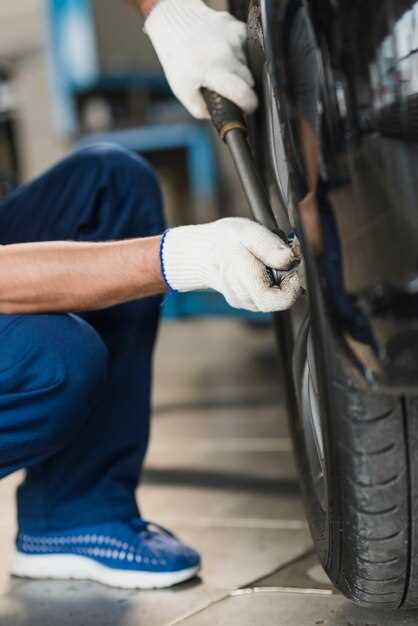
Dealing with a flat tire can be a frustrating experience, especially when you’re in a hurry or away from home. It’s essential to have the knowledge and tools necessary to address this common issue quickly and effectively. This guide will provide you with straightforward steps to help you fix a flat tire with minimal hassle.
Understanding the Basics of a flat tire is the first step in being prepared. A flat tire can occur due to various reasons, including punctures from sharp objects, valve stem leaks, or damage to the tire itself. Regardless of the cause, knowing how to assess the situation is crucial in determining the right approach for a fix.
With the right tools, such as a spare tire, jack, and tire repair kit, you can tackle this problem with confidence. In the following sections, we will break down each step in the tire repair process, ensuring that you’re equipped to get back on the road in no time. From identifying the issue to safely replacing the tire, this guide will make tire maintenance accessible to everyone.
Identifying the Cause of the Flat Tire

To effectively address a flat tire, first determine its underlying cause. This process can save time and prevent further issues. Start by visually inspecting the tire for noticeable damage, such as punctures, cuts, or embedded objects like nails or screws. A thorough examination can reveal both obvious and hidden problems.
Next, assess the tread pattern for uneven wear. Irregular wear might indicate alignment or inflation issues. If the tire’s sides show bulges or blisters, it may be a sign of internal damage. Also, check the valve stem for leaks or cracks, as these components can sometimes lead to air loss.
After the visual inspection, consider environmental factors. If you’ve recently encountered rough terrain, debris, or potholes, these can contribute to tire damage. Additionally, take note of temperature changes, as extreme heat or cold can affect tire pressure.
If you suspect a slow leak, perform a simple test. Apply soapy water to the tire’s surface and valve stem. Watch for bubbling, which indicates air escaping from a puncture or a compromised seal. This method can help pinpoint less obvious sources of leakage.
Finally, consult your vehicle’s manual for recommended tire maintenance. Regular checks of tire pressure and condition can help prevent flats and extend the lifespan of your tires. Understanding the cause of a flat tire not only aids in immediate repairs but also promotes better tire care in the future.
Step-by-Step Instructions for Changing the Tire

First, ensure the vehicle is parked on a flat, stable surface and engage the parking brake. This will prevent the car from rolling during the process.
Next, gather all necessary tools and equipment: a spare tire, a jack, a lug wrench, and a wheel chock. If you have wheel covers, prepare to remove them as well.
Loosen the lug nuts on the flat tire while the wheel is still on the ground. Use the lug wrench and turn the nuts counterclockwise. Do not completely remove them yet; just loosen them enough to turn by hand.
Place the jack under the vehicle at the designated lifting point, which can typically be found in the owner’s manual. Make sure the jack is on a solid part of the frame for stability.
Raise the vehicle until the tire is off the ground. Check to ensure that the jack is secure and that the vehicle is stable before proceeding.
Now, completely remove the loosened lug nuts by turning them counterclockwise. Keep them in a safe place as you will need them to secure the spare tire.
Take off the flat tire by pulling it straight toward you. Set it aside in a safe location.
Align the spare tire with the wheel hub, ensuring that the holes match up with the bolts. Push the spare tire onto the hub gently until it is flush against the surface.
Hand-tighten the lug nuts onto the bolts, turning them clockwise. Ensure that they are on tight enough to hold the tire in place, but do not fully secure them yet.
Lower the vehicle back to the ground slowly. Once the tire is in contact with the ground, use the lug wrench to tighten the lug nuts completely. Follow a star pattern to ensure even distribution of pressure.
Finally, replace any wheel covers if necessary, remove the jack from under the vehicle, and store all tools used. It is also advisable to check the pressure in the spare tire and ensure it is suitable for driving.
Tips for Preventing Future Flat Tires
To minimize the likelihood of experiencing flat tires, consider the following proactive measures:
Regular Tire Inspections: Frequently inspect your tires for any signs of wear or damage. Look for cracks, bulges, or embedded objects that could lead to punctures.
Maintain Proper Tire Pressure: Check your tire pressure at least once a month. Under-inflated tires are more prone to blowouts and punctures, while over-inflated tires wear unevenly and can burst.
Rotate Tires Periodically: Regularly rotating your tires promotes even wear and extends their lifespan. Follow your vehicle’s maintenance schedule for optimal results.
Avoid Overloading Your Vehicle: Exceeding your vehicle’s weight limit can put extra stress on tires, leading to premature wear and possible flats. Check your owner’s manual for specifications.
Drive Cautiously: Avoid sudden stops, sharp turns, and aggressive driving, which can increase the risk of tire damage. Stay vigilant for potholes, debris, and other road hazards.
Utilize Quality Tires: Invest in reputable tire brands that meet safety standards. Higher-quality tires often feature better durability and puncture resistance.
Seal or Patch Small Punctures: If you notice a small puncture, have it repaired promptly to prevent further damage. Ignoring it can worsen the problem and lead to a flat tire.
Check Alignment and Balancing: Misalignment or unbalanced tires can cause uneven wear and may increase the chances of a flat. Regularly schedule alignments and balancing as part of your vehicle maintenance.
Replace Worn Tires: Monitor tread depth and replace tires when they reach the wear indicators. Driving on bald tires significantly heightens the risk of flats.
Implementing these strategies will help ensure your tires remain in good condition and significantly reduce the chances of a flat on the road.





